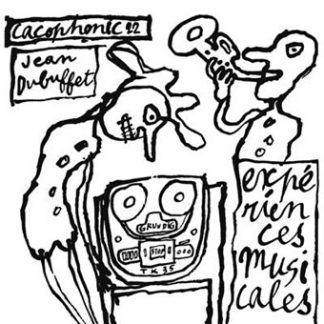Description
Released on the occasion of the exhibition “Klaus Weber – Sick Fox” at Andrew Kreps Gallery, New York, in 2004. An “anti-humanist” musical piece, overlaying Klaus Weber’s voice and frequency ranges defined in relation to the hearing of cricket.
Kranke Fuchs is meant as a manual about how to get rid of yourself as an inextricable part of an unacceptable structure. At the same time it represents a conception of the available options of acting productively within it.
On the record cover you can see Klaus Weber as an apeman. The image refers to the cover of a 1963 record by Klaus Kammer, reciting Kafka’s brilliant Report to an Academy, the story of an ape who has decided to become human, while he found himself amongst humans in forlorn captivity.
There were two pieces on the one track of the record, using different frequency ranges, which were played simultaneously—one for the crickets and one for human perception. When the record is played, Weber is also singing inaudibly for the crickets.
Crickets use a very high frequency sound for their communication, which cannot be perceived by the human senses. The crickets’ chirping of which we are so fond is in fact no more than acoustic debris to which the crickets themselves are utterly oblivious. The same applies to our voices which reach the crickets’ “ears” as an abstract acoustic hiss only.
Born 1967 in Sigmaringen, Klaus Weber lives and works in Berlin. For anyone not used to today’s postmedium condition, his constructions could be mistaken for the experiments or inventions of a scientist or engineer. The main element of many of his works is a force or species belonging to the natural world, meteorological or biological: wind, sunbeams and rainfall, as well as plants and insects. Brought into combination with industrial materials of various kinds, Weber’s assemblages look as if they should be more at home on the laboratory bench than the gallery floor. Here, the natural world is made to behave as it rarely does: heavy rainfall follows a moving car on a dry day; a small tornado issues forth from an ordinary vacuum cleaner; mushrooms emerge through tarmac; a plant hangs in the air without soil; a cactus is not a single plant, but two conjoined, with a pot at either end; a vast moth appears on the equities pages of a newspaper. Some of Weber’s work recalls the mermen that taxidermists made from gibbons and fish that found their way into some Victorian natural history museums at a time when the veracity of the duckbilled platypus was doubted and Darwin’s Origin of the Species was shaking the intellectual foundations of the West.




